Xôi gấc đậu xanh (Vietnamese red sticky rice with mung beans) is a Vietnamese dish consisting of red sticky rice and mung beans.
It combines the sweetness of these two ingredients with the creamy appeal of coconut milk and the seductive look of gac fruit into an internationally renowned rice dish.
You will learn how to prepare this dish from scratch and enjoy it like a local in this article. I will go into the significance of xôi gấc đậu xanh, the tools and ingredients for making it at home, the necessary steps for preparing it, cooking tips, and serving suggestions. Read on for more information!
What Is So Great About Xôi Gấc Đậu Xanh?
Xôi gấc đậu xanh is part of the Xôi family, a group of sticky rice dishes that can be either sweet or savory. It is an improved version of Xôi Gấc (known in English as red sticky rice), which is named after its coloring agent: gấc fruit, a melon-like fruit native to Vietnam.
This fruit has a distinct avocado-like taste and gives Xôi Gấc its vivid orange-reddish color. Authentic xôi gấc đậu xanh doesn’t use any other food coloring.
This dish is often present at special occasions like wedding banquets or Tết (Vietnamese Lunar New Year), as its color is considered a lucky sign. Xôi gấc đậu xanh is a fantastic side dish with meaty delights, though many people also enjoy it as a sweet snack.
What Tools Do I Need To Make Xôi Gấc Đậu Xanh?
Xôi gấc đậu xanh requires standard equipment for making rice dishes. In addition, it can be cooked with either a steamer or a rice cooker.
What Are The Must-have Ingredients For Xôi Gấc Đậu Xanh?
Besides the namesake ingredients, you will need a few oil-rich ingredients to create the best flavor. Gấc fruits can be tricky to find, but I will give you a few ideas on how to locate them.
How To Make Xôi Gấc Đậu Xanh?
The making of xôi gấc đậu xanh involves preparing the sticky rice and mung beans, cooking the mung beans, stir-frying the sticky rice with aromatics before cooking it, and molding the complete dish. The last step can be a little challenging, so pay attention to the photos.
Step 1: Prepare The Main Ingredients
Soak the sticky rice in water for 6 – 8 hours or overnight. Wash and rinse until the water runs clear, then let the rice drain.
Soak the mung beans in water for 3 – 4 hours. Wash and rinse them carefully, then let them drain.
Step 2: Cook The Mung Beans
Cook the mung beans in water for 15 – 18 minutes until they soften and grow larger in size.
Add butter, sugar, salt, and coconut milk to the pot.
Stir well until the mixture gets a solid consistency. If you feel a slight resistance while stirring the mix, it is sufficiently cooked. Turn off the heat and let the mung bean mixture cool down.
Step 3: Stir-fry The Sticky Rice
Cut the gấc fruit in half and scoop out the inside. Remove the seeds, then squeeze the flesh tightly. Sift the chunky mass through a fine sieve to get the juice.
In the skillet, stir-fry the sticky rice with the gac juice, coconut milk, salt, and sugar.
Stir well to ensure even coloring for the sticky rice. You can use two spatulas to do the job easier. When the liquid has evaporated, turn off the heat and let the sticky rice cool down.
Note
Some cooks like to mix gac juice with a few teaspoons of rice wine to brighten its color. If you have this ingredient available, feel free to add it.
Some Xôi Gấc recipes incorporate both gấc juice and black gấc seeds, but I find it easier to cook without the seeds.
Step 4: Cook Xôi Gấc Đậu Xanh
With A Steamer
Fill one-third of the steamer with water and bring it to a boil. Arrange the sticky rice evenly over the basket.
Put on the lid and cook for 20 minutes on high heat. Occasionally remove the lid and fluff the rice to distribute the heat more evenly.
With A Rice Cooker
Line the bottom of the rice cooker with pandan leaves to keep the rice from sticking to the bottom.
Add the sticky rice to the inner pot and turn on the rice cooker. When the sticky rice is well done, open the lid and fluff the rice gently.
Step 5: Mold Xôi Gấc Đậu Xanh
Fill the mold with sticky rice and use a spatula or spoon to push it down tightly until very compact. It should fill one-third of the mold. Remove the mold and transfer the layer of sticky rice to a plate.
Repeat the process, but after the layer of sticky rice is complete, add mung beans on top of it and press it down until compact. This layer should also be as high as one-third of the mold.
Return the first layer of sticky rice to the mold. Force it down slightly to make the three layers stick together.
Get xôi gấc đậu xanh out of the mold, plate it, and garnish it with toasted sesame seeds and coconut flakes.
Are There Tips For Perfect Xôi Gấc Đậu Xanh?
In this section, I will tell you how to choose the best gấc fruits, why you should use the right amount of gấc juice or soak the rice and mung beans in advance, and what to do without molds.
What To Pair With Xôi Gấc Đậu Xanh?
When served as a side dish, xôi gấc đậu xanh goes well with meat dishes and products. A few examples are roasted meat, braised pork, poached chicken, Chinese sausage, Vietnamese ham, Chả Lụa (Vietnamese steamed pork roll), etc.
When you enjoy this xôi as a snack, it tastes good enough on its own. But a little Muối Vừng Lạc (a condiment made of salt, sugar, roasted and pounded peanuts, and sesame seeds) will make a nice addition.
How To Store And Reheat Xôi Gấc Đậu Xanh?
An airtight container will help you store xôi gấc đậu xanh efficiently: put the leftovers in it and move it to the refrigerator. While the dish will eventually dry out, it can last for 2 – 3 days in there. If you store it in the freezer, the storage time can reach 2 – 3 months.
To reheat xôi gấc đậu xanh, I recommend using a microwave or a steamer. The former requires less preparation, but you need to supplement the rice with enough water to prevent it from drying out. Alternatively, you can put the rice in the rice cooker and turn on the “Warm” setting.
Add More Color To Your Meals With Xôi Gấc Đậu Xanh, Why Not?
Xôi gấc đậu xanh is a versatile dish that can be customized with various toppings and condiments. Among beloved Vietnamese dishes, it is a symbol of good luck, community, and togetherness in Vietnamese cuisine. Its vivid color is sure to bring more joy to your everyday meals.
As you use different molds to create beautiful forms, this dish also allows your artistic self to surface. Don’t hesitate to share your work with me in the comment section. If you have any questions, let me know. Before you go, don’t forget to tell your friends about this post.
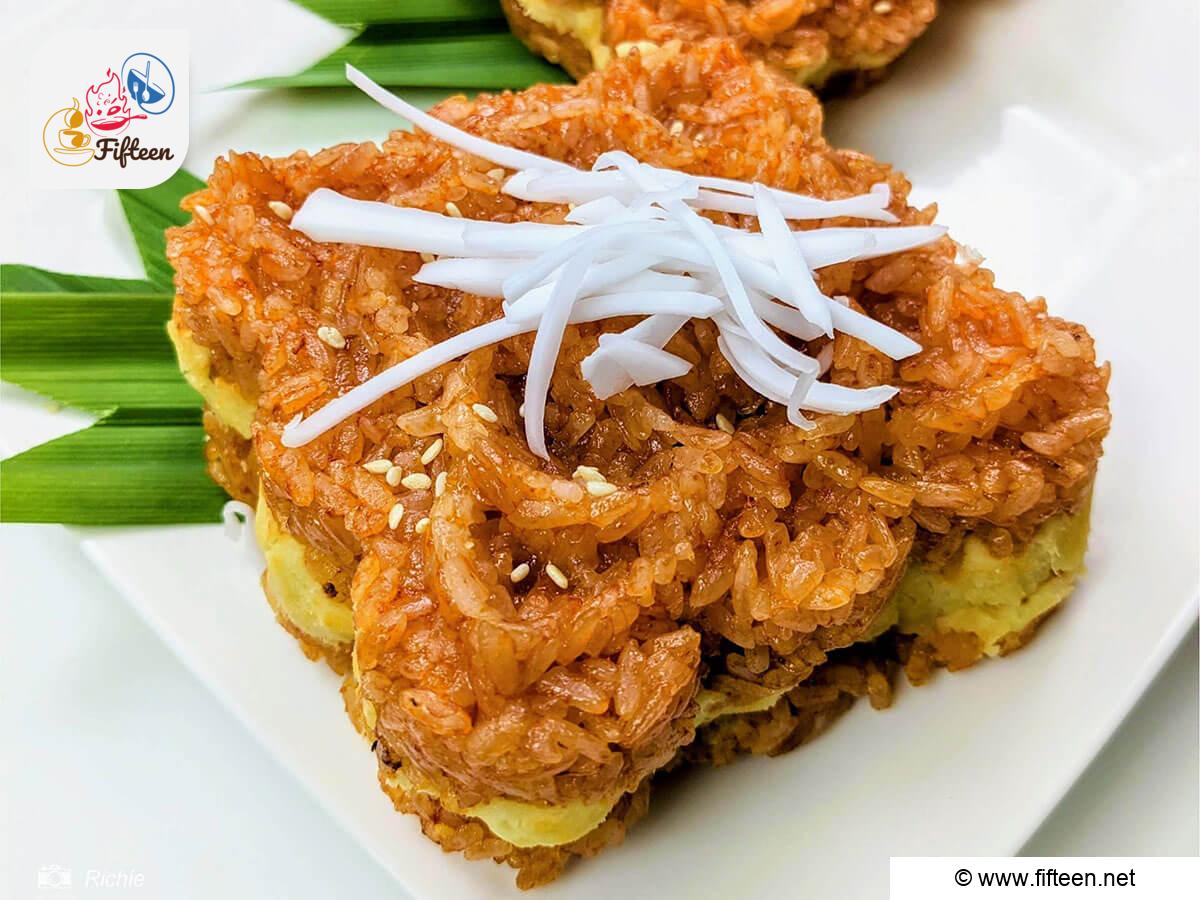
Xôi Gấc Đậu Xanh Recipe (Vietnamese Red Sticky Rice With Mung Beans)
Equipment
- Non-stick skillet
- Sieve
- Spatula
- Ladle
- Cooking pot
- Rice cooker/ Steamer
- Molds
Ingredients
- 1.1 pounds 500 grams sticky rice
- 7 ounces 200 grams mung beans
- 1 ounce 30 grams butter
- 1.8 ounces 50 grams toasted sesame seeds
- 2 teaspoons sugar
- 2 teaspoons salt
- 160 ml coconut milk
- 1 gấc fruit
- A few pandan leaves
Instructions
- Soak the sticky rice in water for 6 – 8 hours or overnight. Wash and rinse until the water runs clear, then let the rice drain.
- Soak the mung beans in water for 3 – 4 hours, then wash and drain. Cook the mung beans in water for 15 – 18 minutes. Add butter, sugar, salt, and coconut milk to the pot and stir well until thickened. Turn off the heat and let the mung bean mixture cool down.
- Cut the gấc fruit in half, scoop out the inside, remove the seeds, and squeeze the flesh tightly. Sift the chunky mass through a fine sieve to get gac juice.
- In the skillet, stir-fry the sticky rice with the gấc juice, coconut milk, salt, and sugar.
- Stir well until the liquid has evaporated. Turn off the heat and let the sticky rice cool down.
- Cook the stir-fried sticky rice in the steamer over high heat for 20 minutes or in a rice cooker until it is well done. Open the lid and fluff the rice gently.
- Fill the mold with sticky rice and use a spatula to push it down tightly until compact and as thick as one-third of the mold. Remove the mold and transfer the layer of sticky rice to a plate.
- Repeat the layering process, but after the rice, add a compact layer of mung beans, one-third the mold's depth. Top with the rice again, pressing lightly to ensure all layers adhere.
- Get Xôi Gấc Đậu Xanh out of the mold, plate it, and garnish with toasted sesame seeds and coconut flakes.
Video
Notes
- The instructions are for preparing 7 servings.
- Choose fresh gấc fruits with a uniform round shape, even spikes, strong hues of red and orange, a good weight, and no cracks or bruises.
- Don’t use too much gấc juice, or the rice will be mushy.
- You can skip the step of soaking the sticky rice and mung beans.
- You can replace a mold with a food storage container or a bowl.


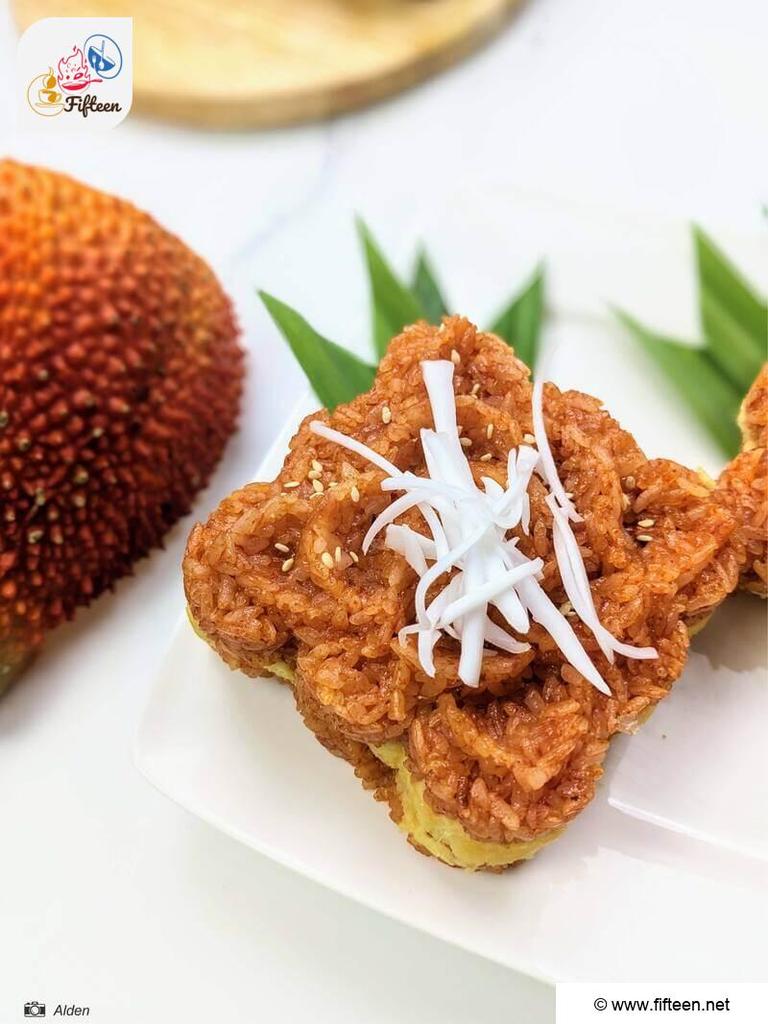
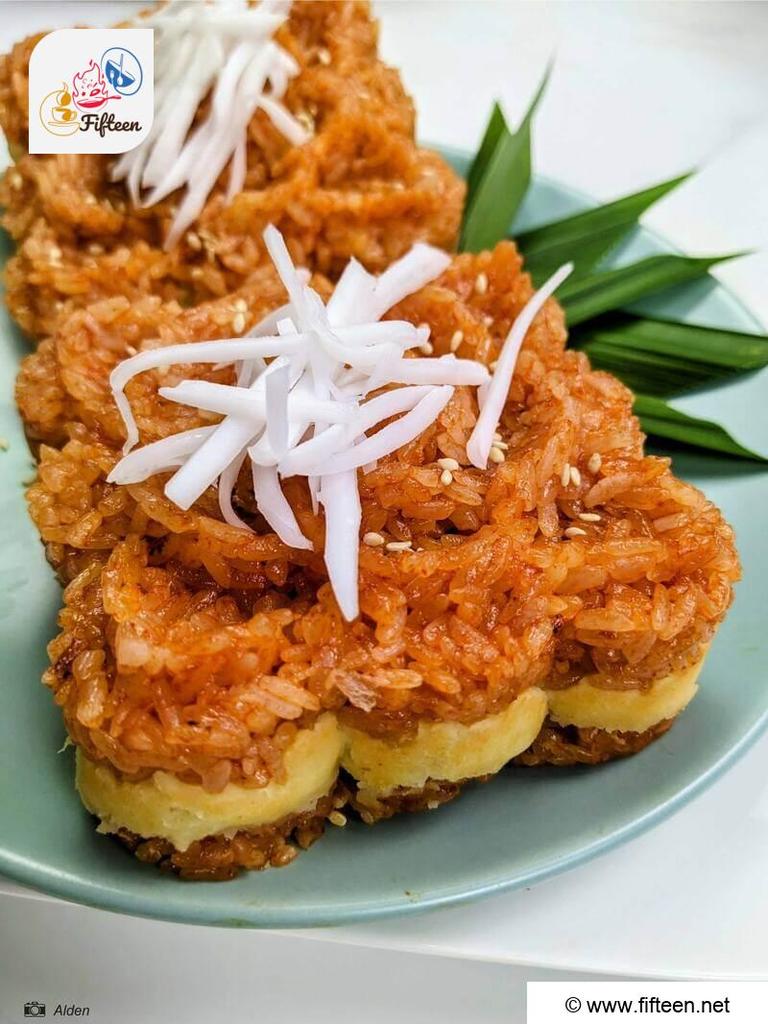
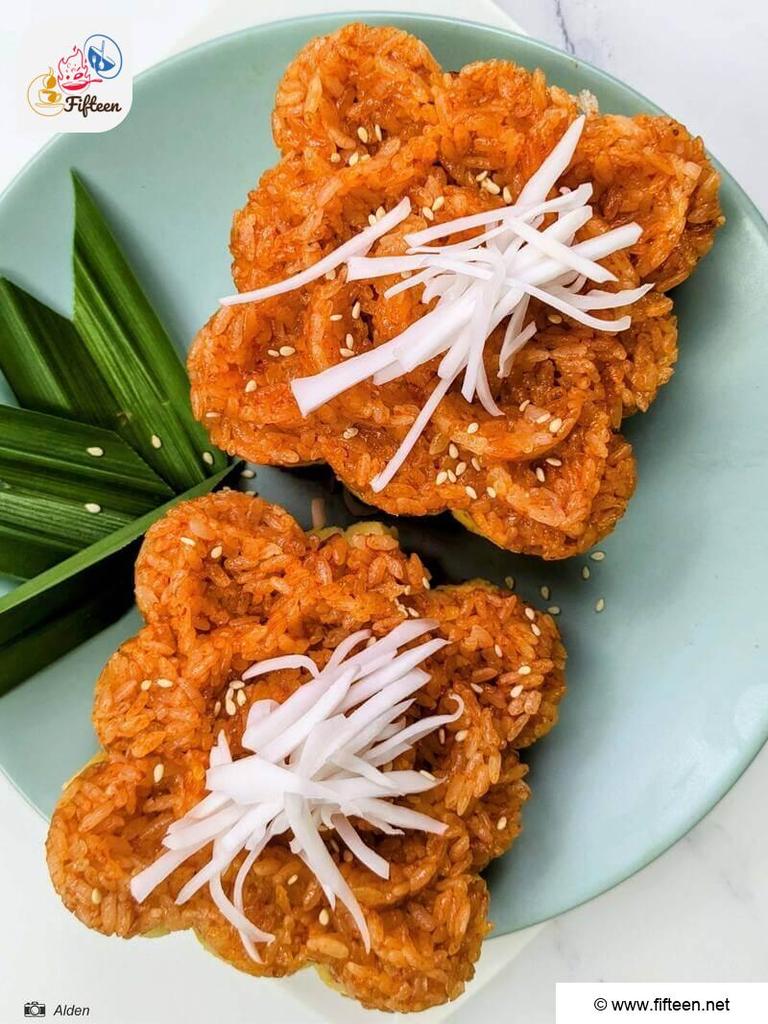
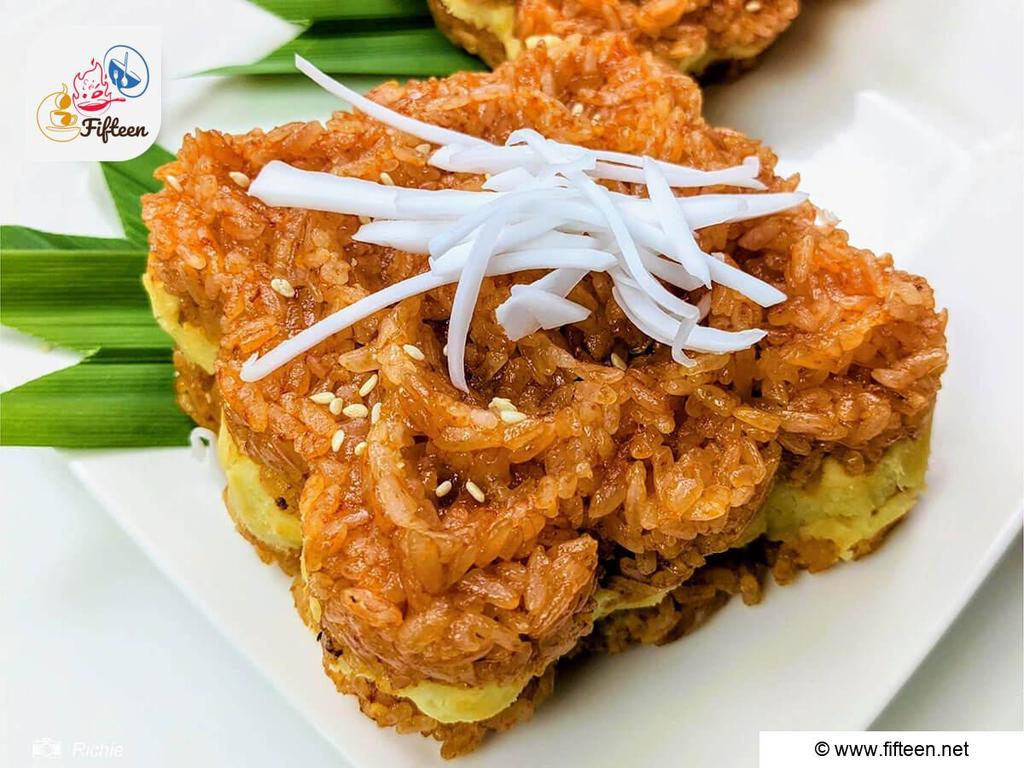
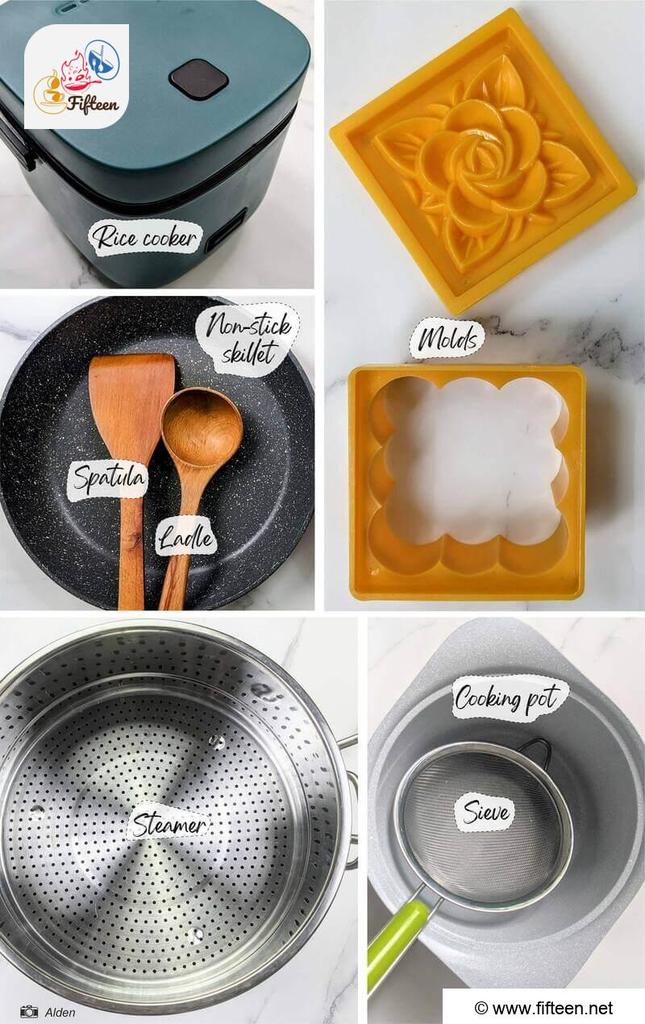
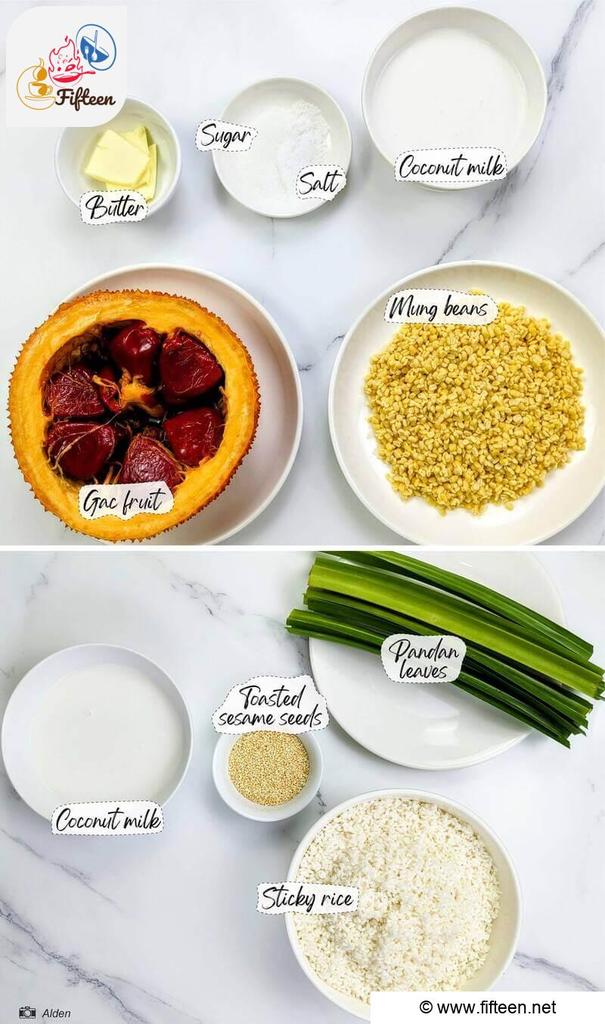
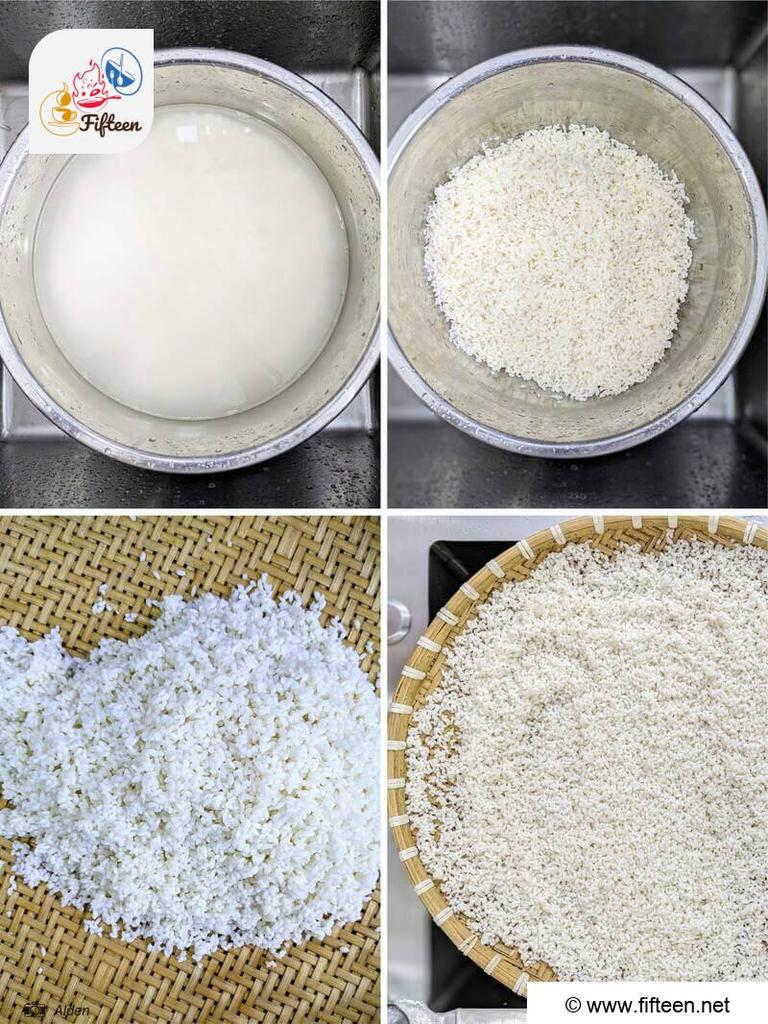
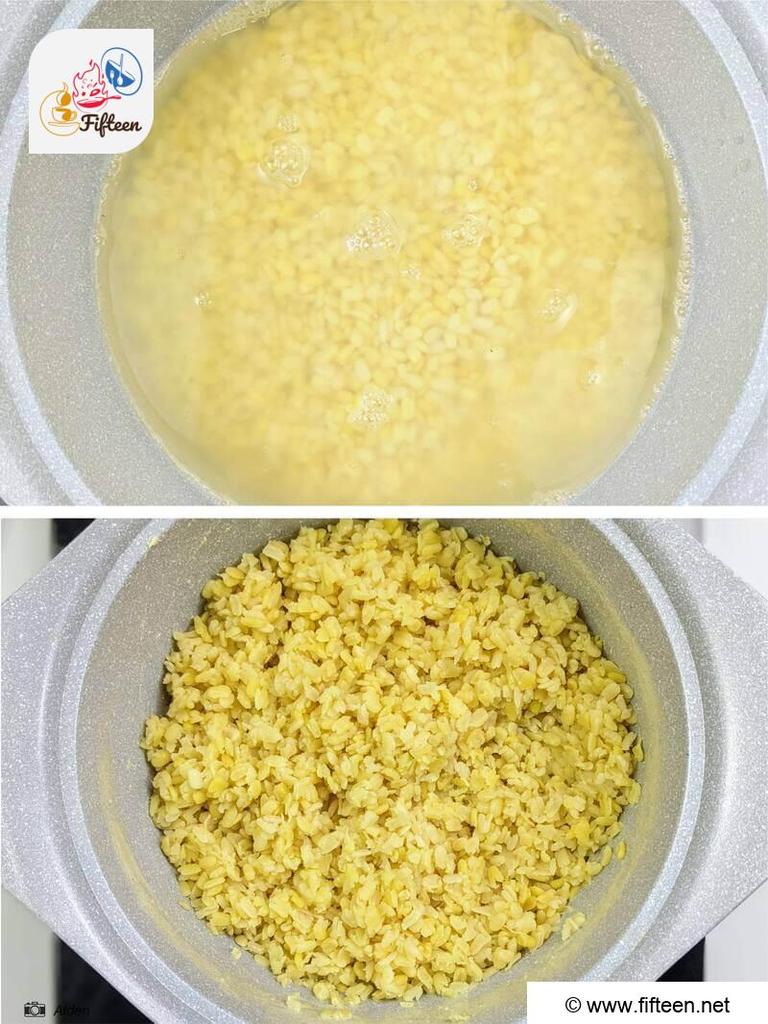
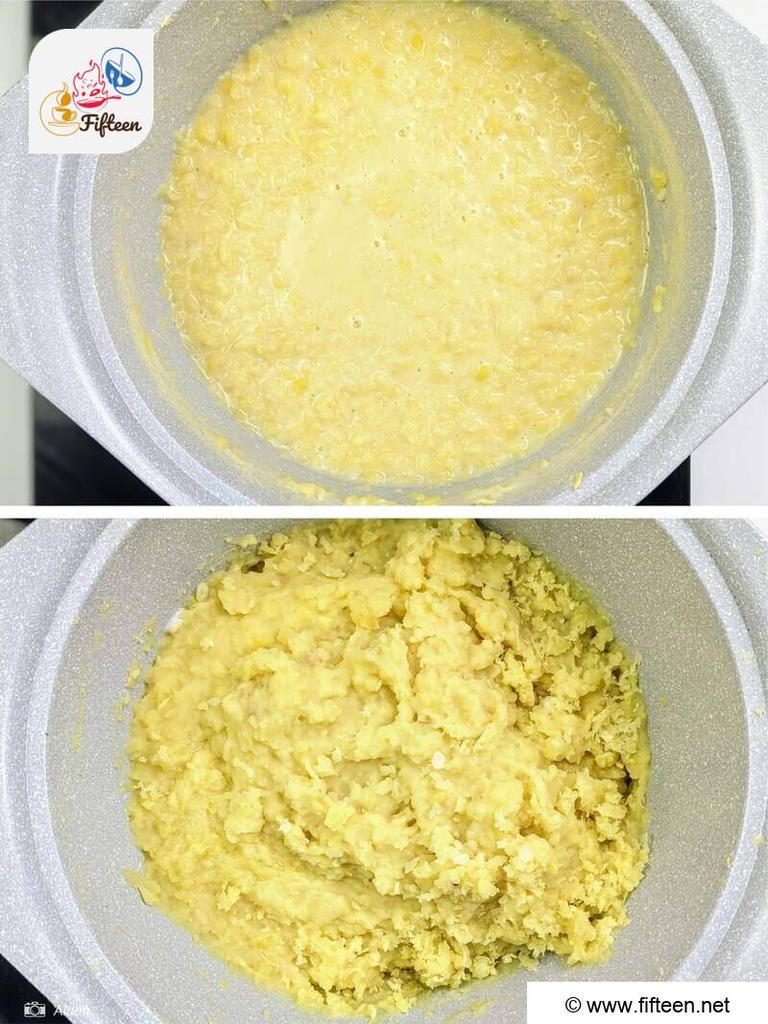
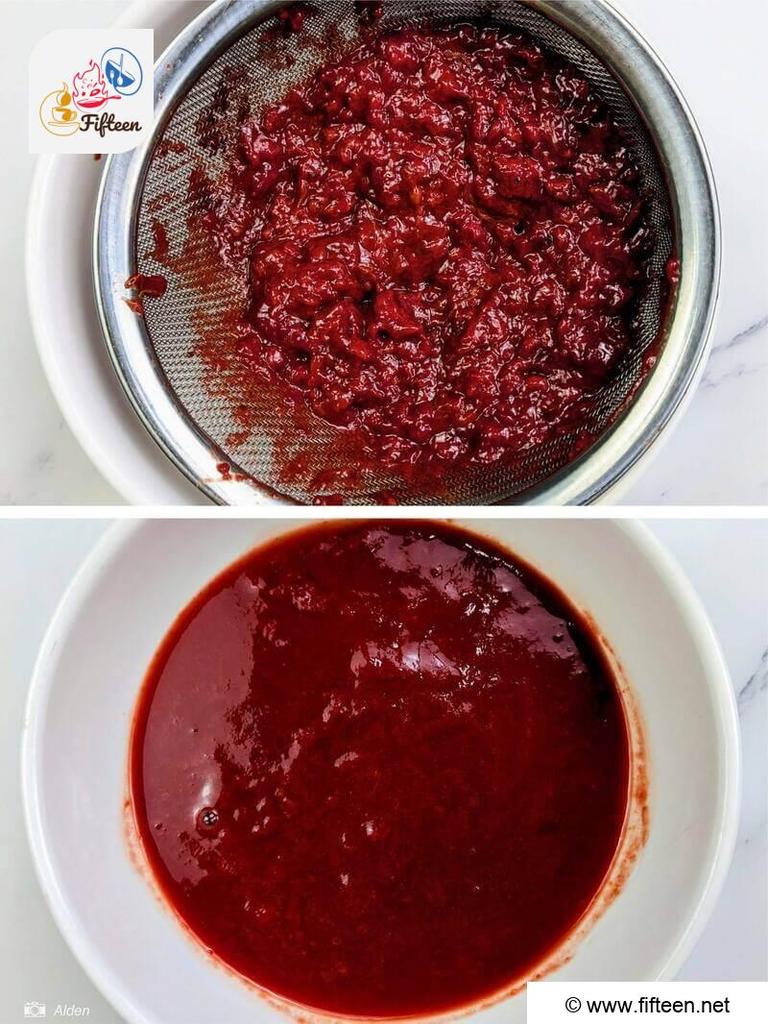
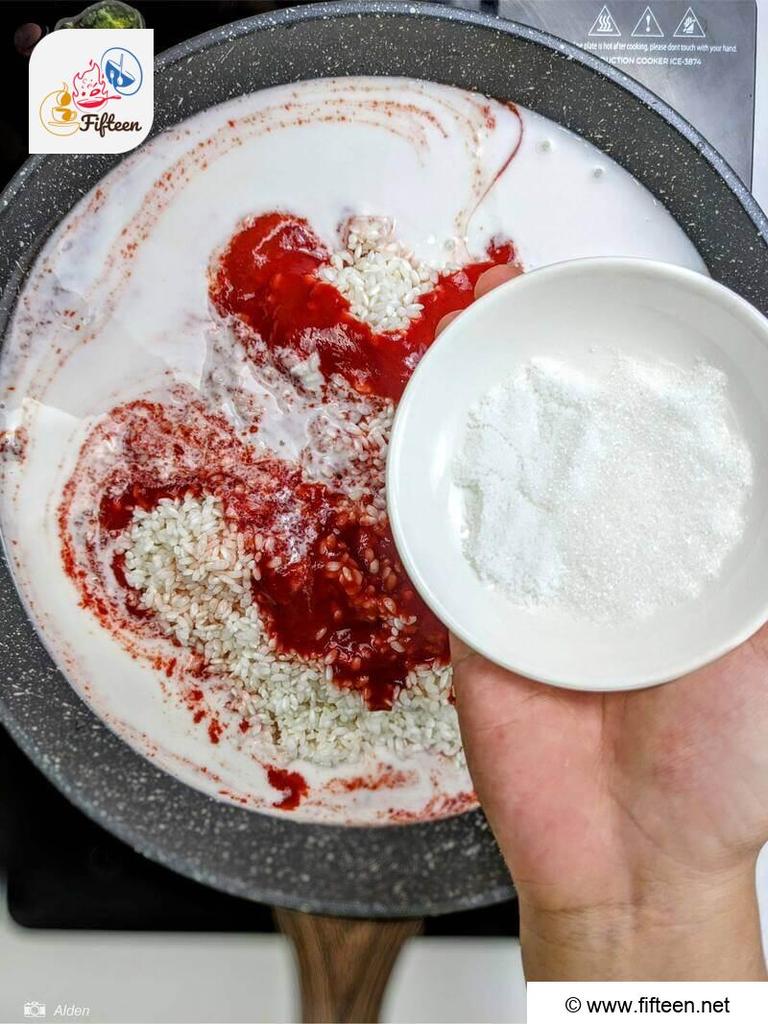
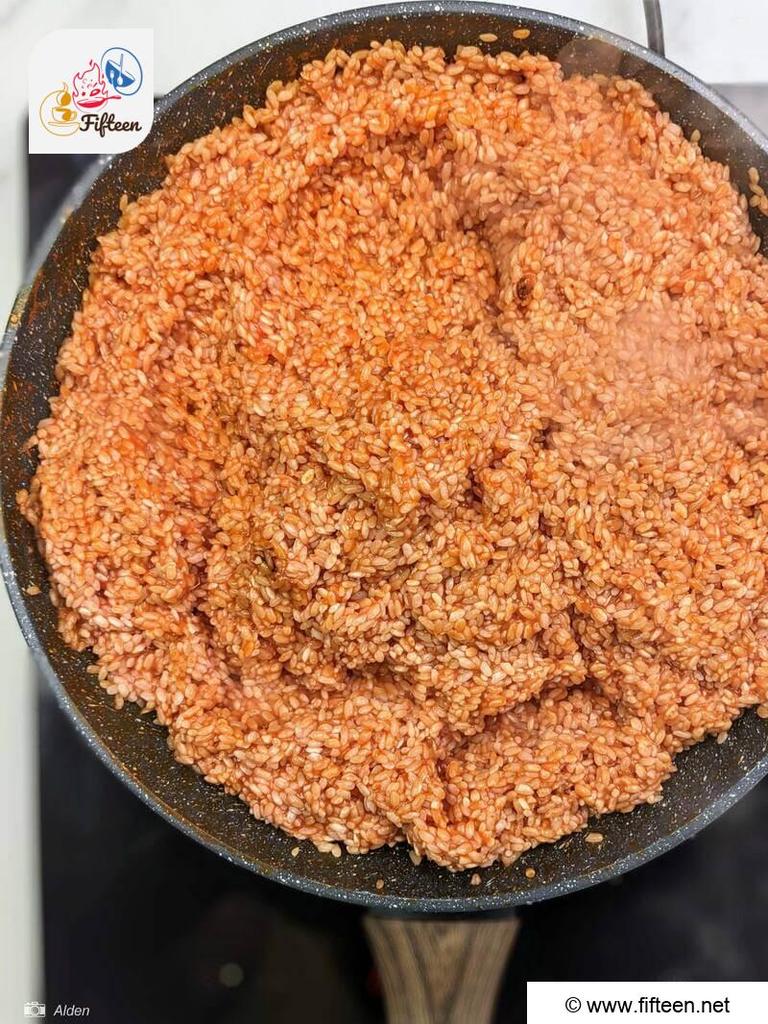
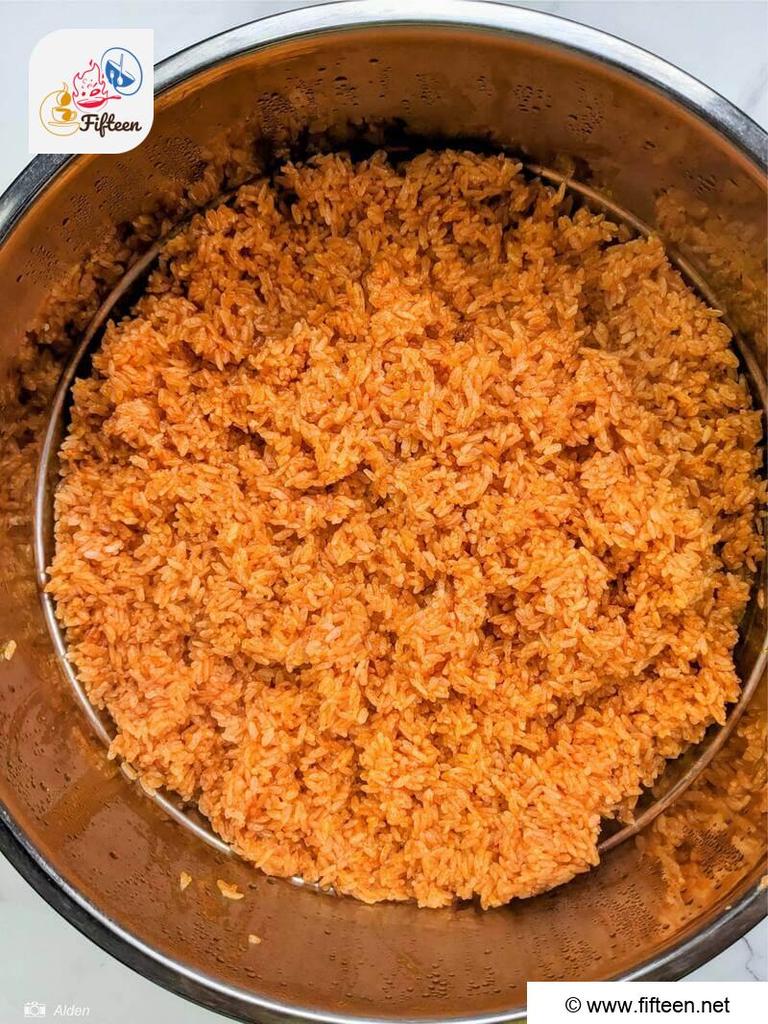
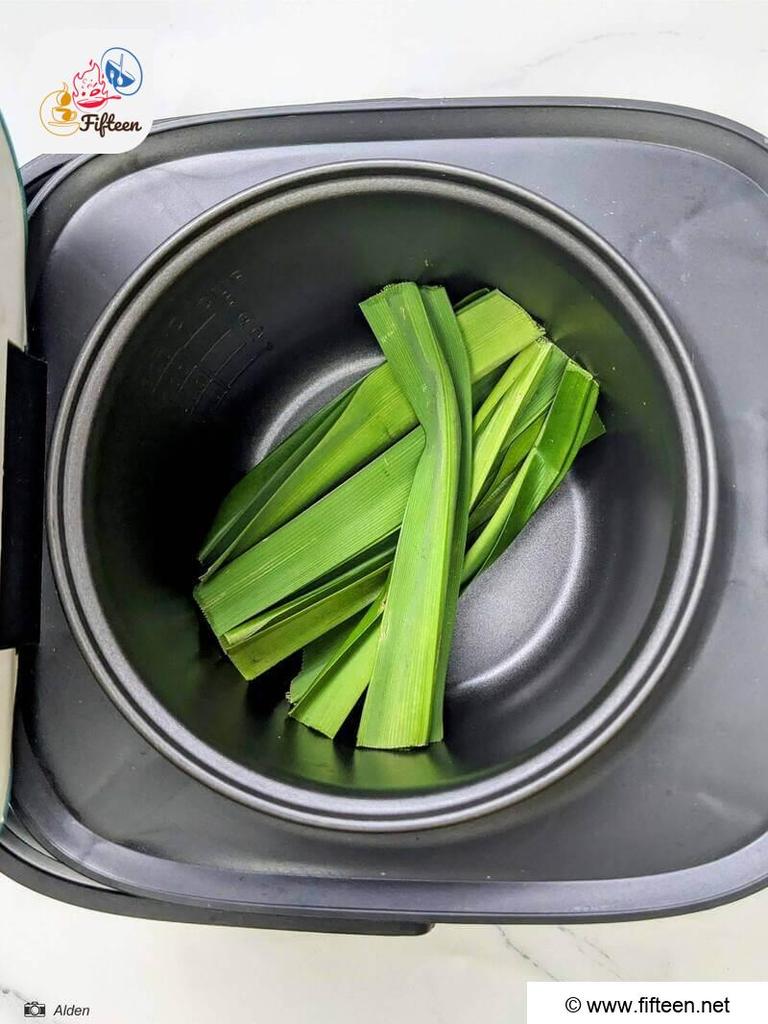
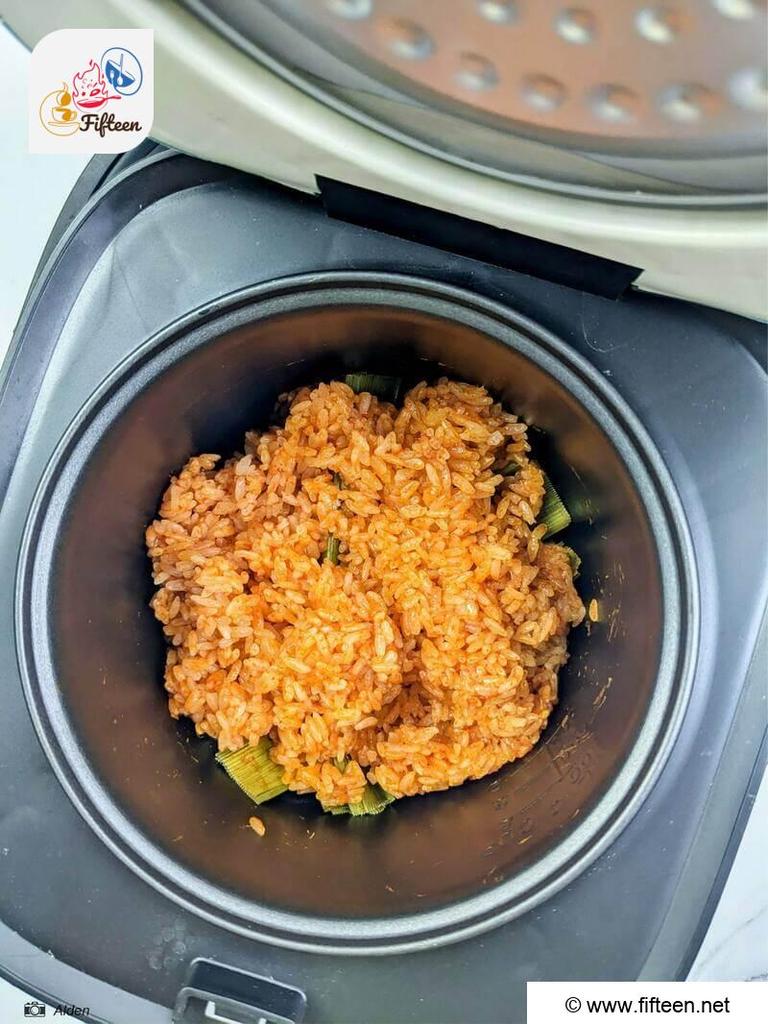
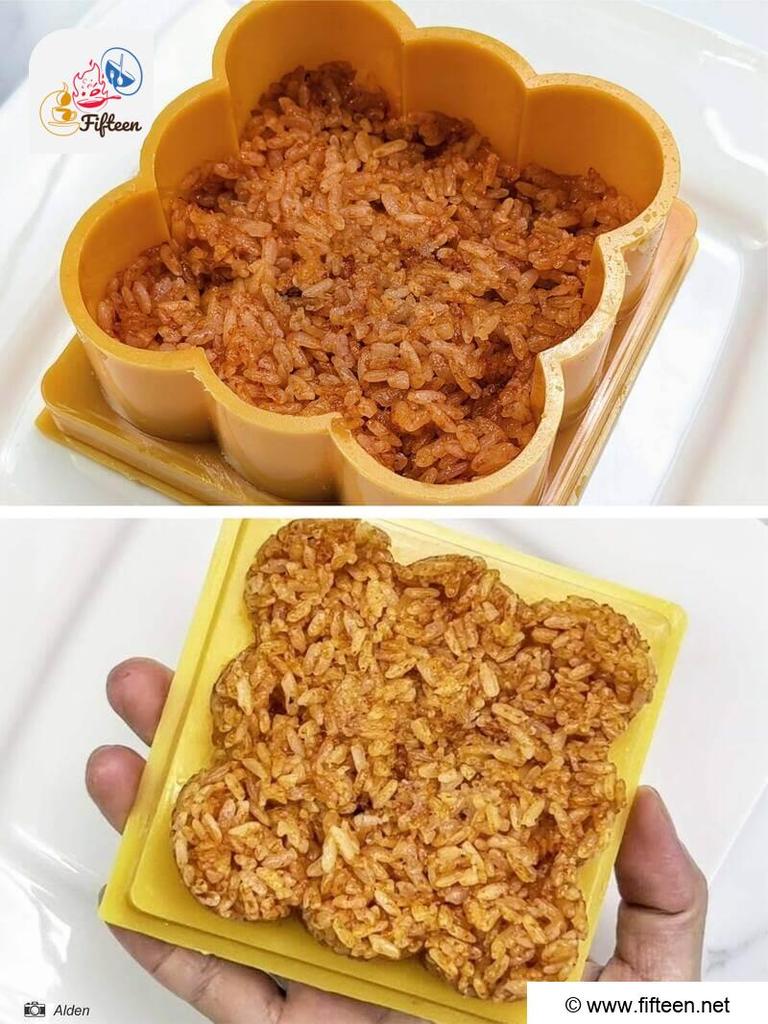
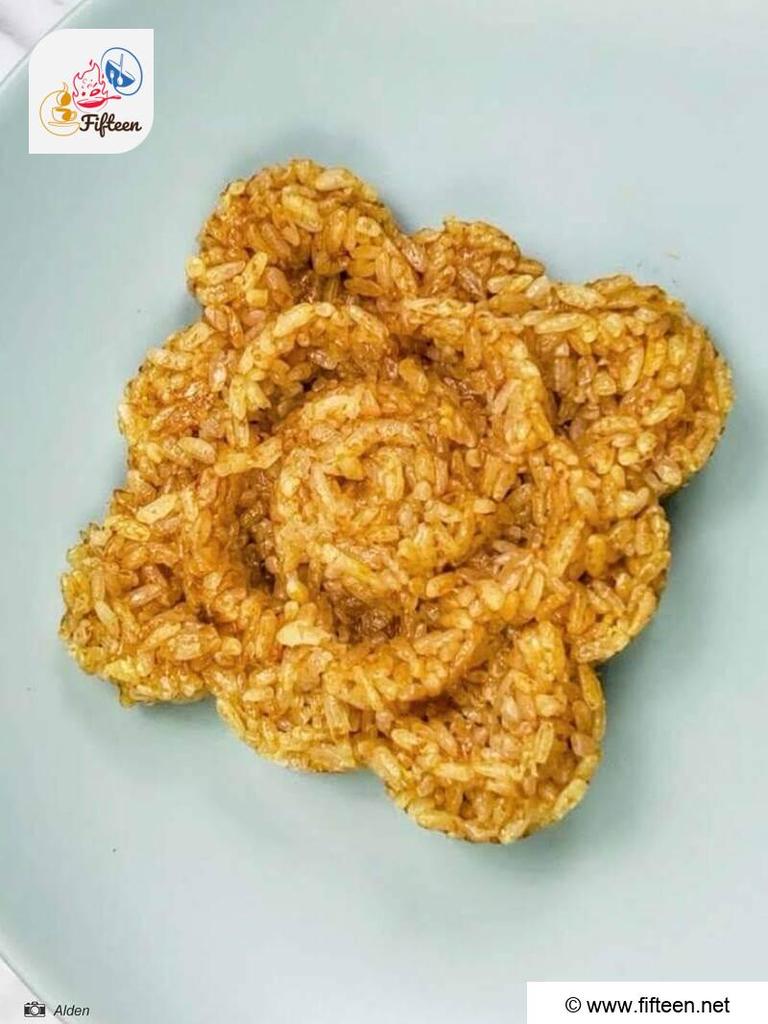
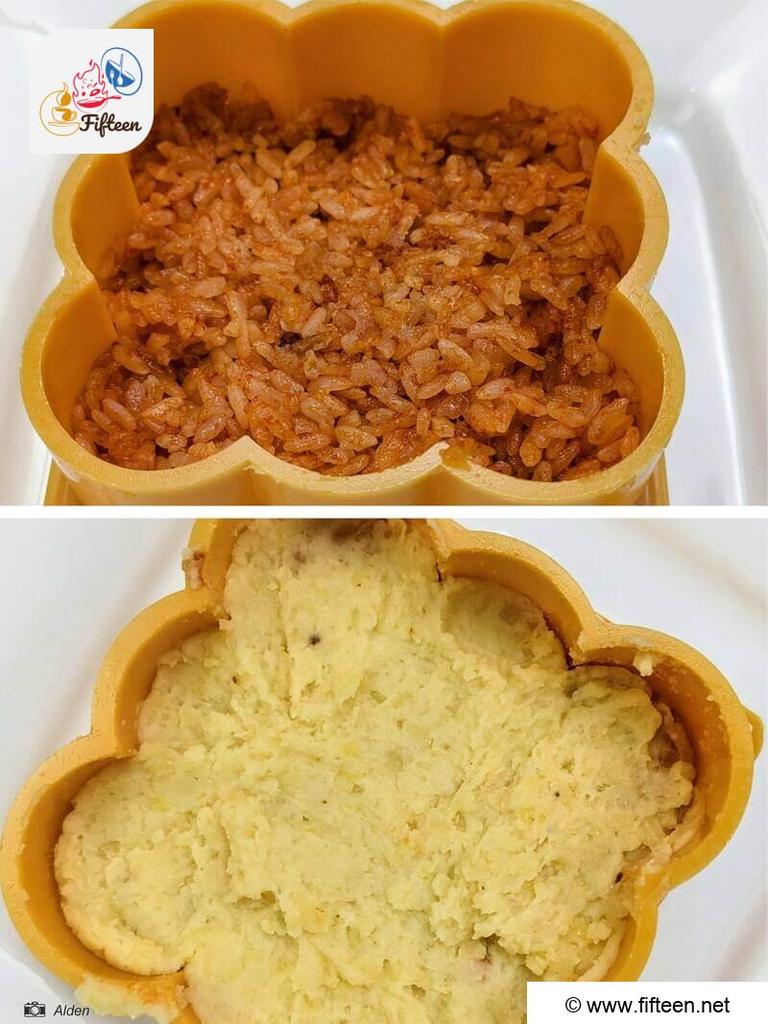
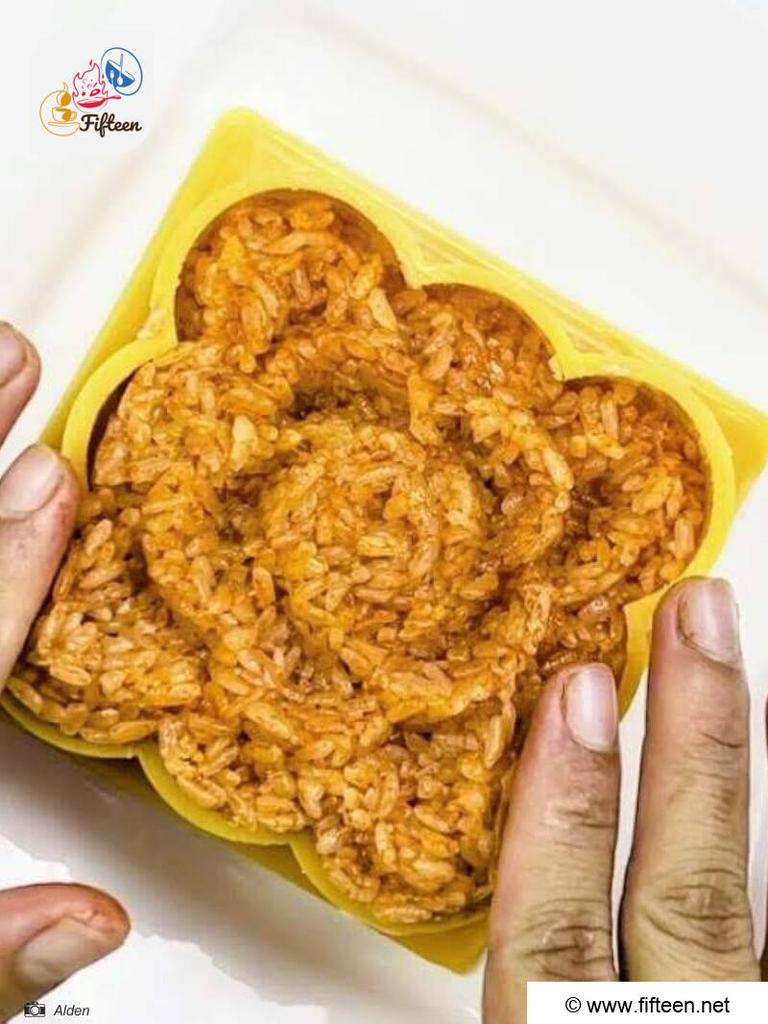
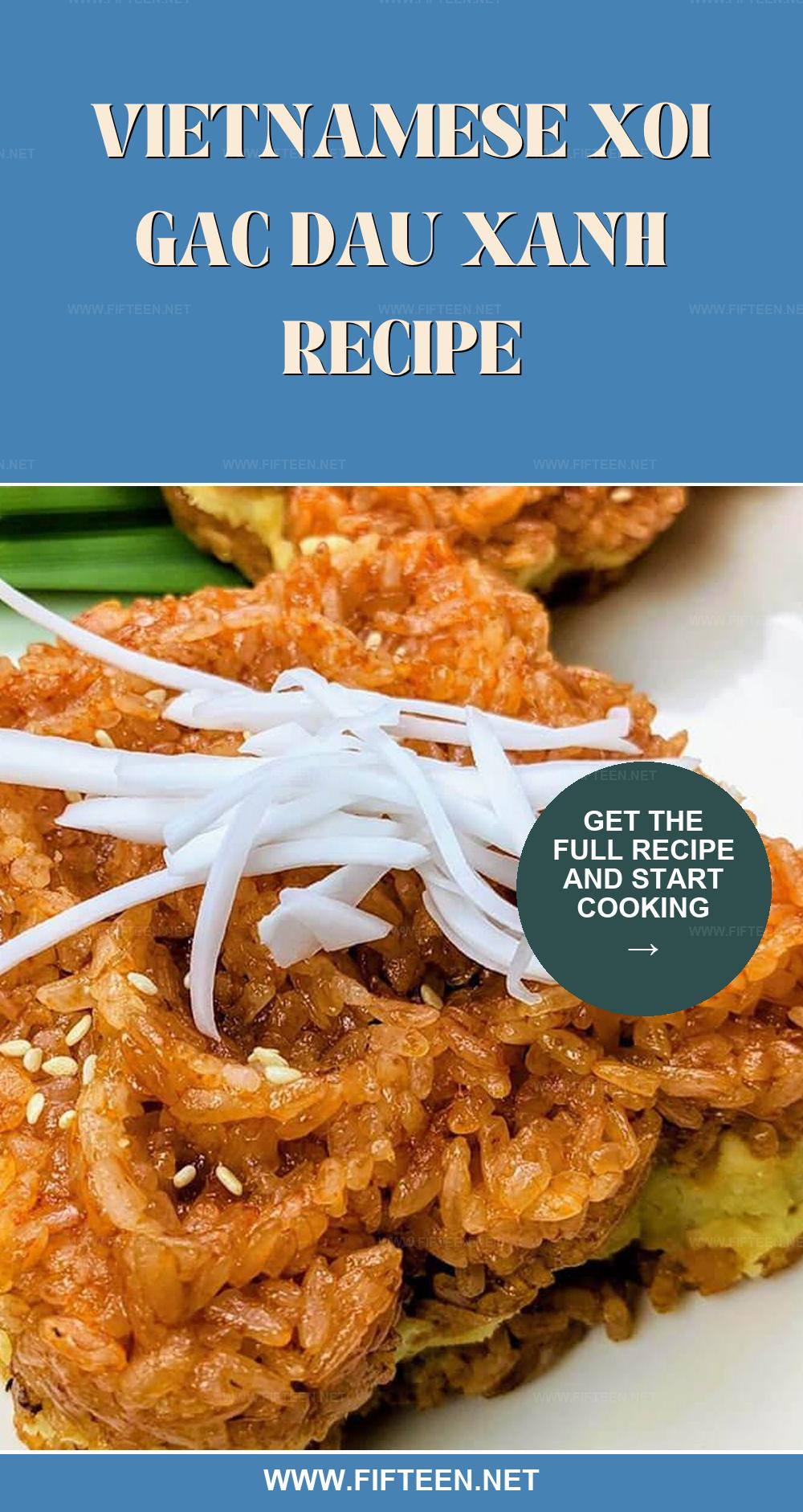
Tien – Alden
Content Writer
Expertise
Home Cooking, Recipe Development, Food Editor, Beverage Editor, Cooking-video Maker, Asian Food Content Creator
Education
Saigon Tourism College
Advanced Culinary Workshop, Beijing
Vietnamese Traditional Cooking School
American College of Vietnam
Alden is a skilled chef with expertise in Asian cuisines, known for blending traditional Vietnamese and Chinese cooking with contemporary innovations. Alden’s passion for Asian flavors and her creative approach to both food and beverages inspires fellow chefs and those aspiring to enter the field.